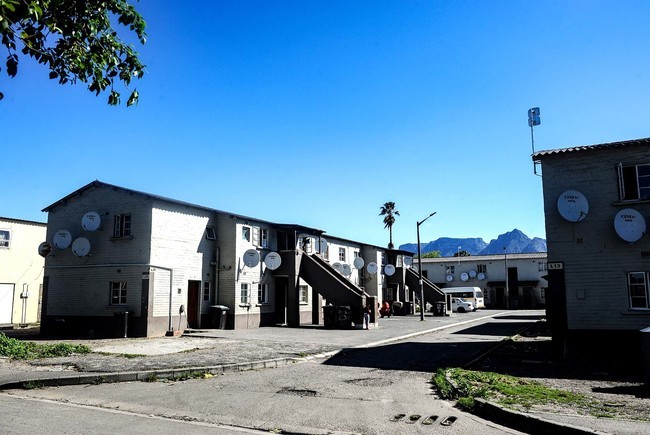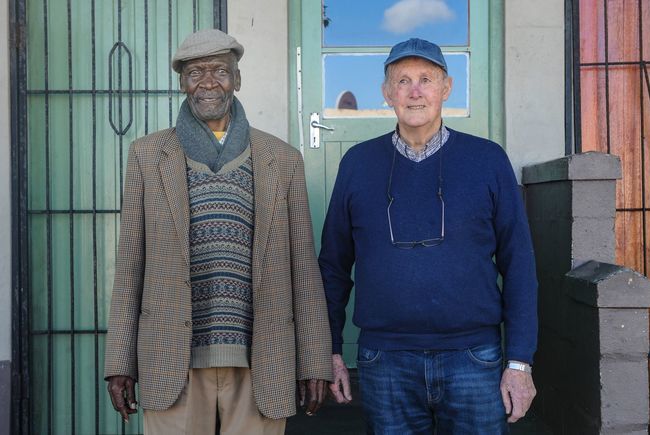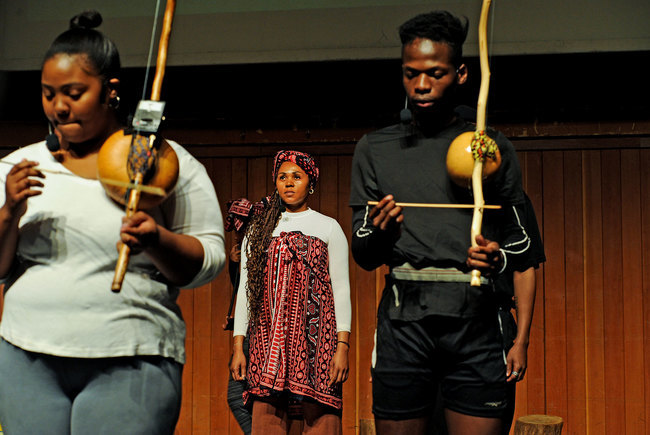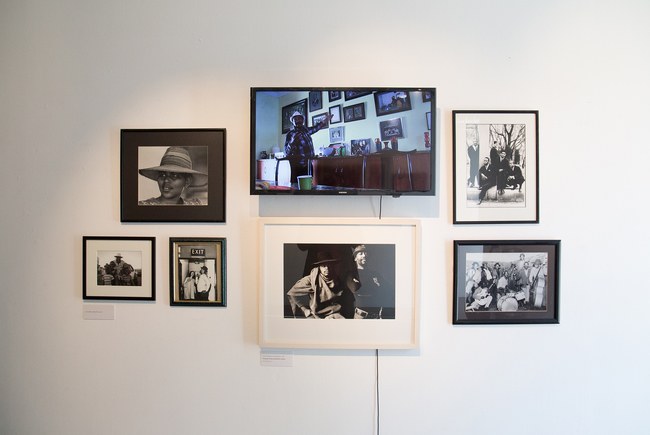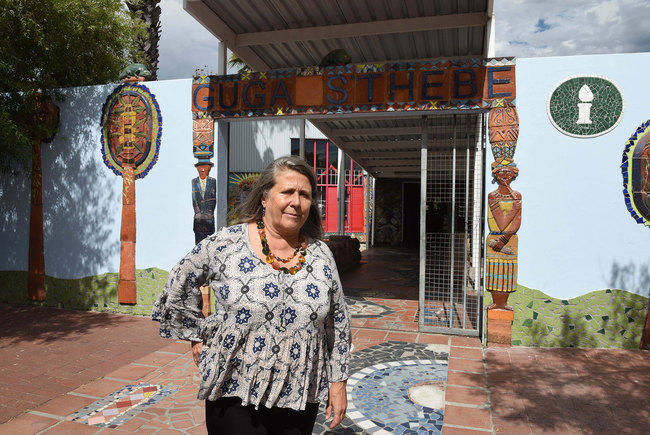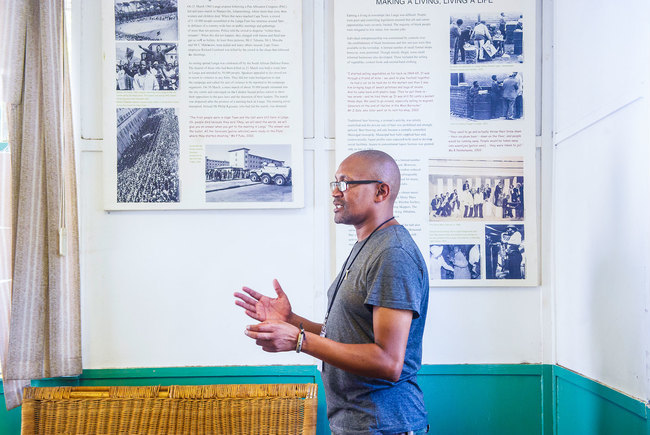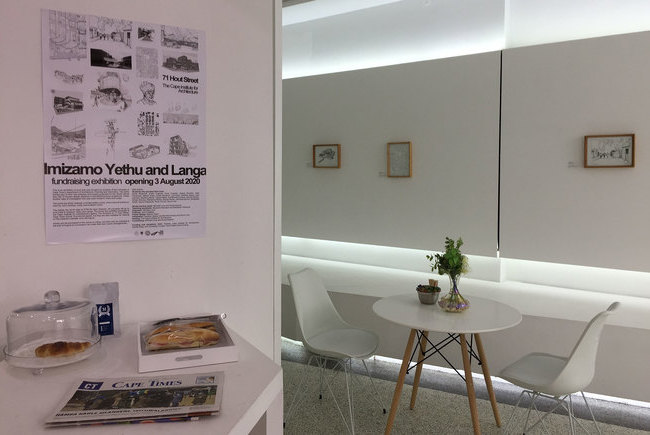UCT students and staff help to rebuild children’s theatre
02 September 2022 | Story Supplied. Read time 7 min.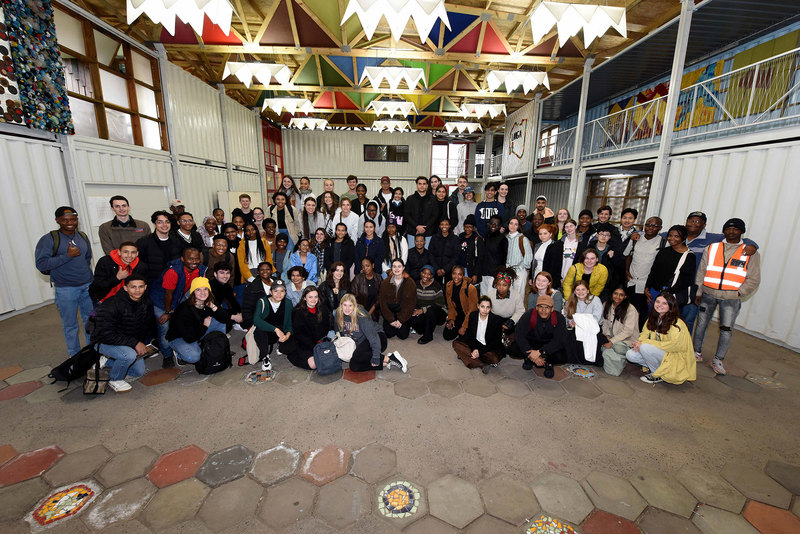
Staff and students from the University of Cape Town (UCT) School of Architecture, Planning, and Geomatics have helped to rebuild a popular Langa children’s theatre after it was damaged by fire in 2020.
The repair project at the Guga S’thebe Children’s Theatre was completed in August 2022 after Clint Abrahams, a lecturer in the School of Architecture, Planning, and Geomatics, kicked off the project in 2021 and brought his students in by incorporating design work for the theatre into his 2021 and 2022 second-year classes.
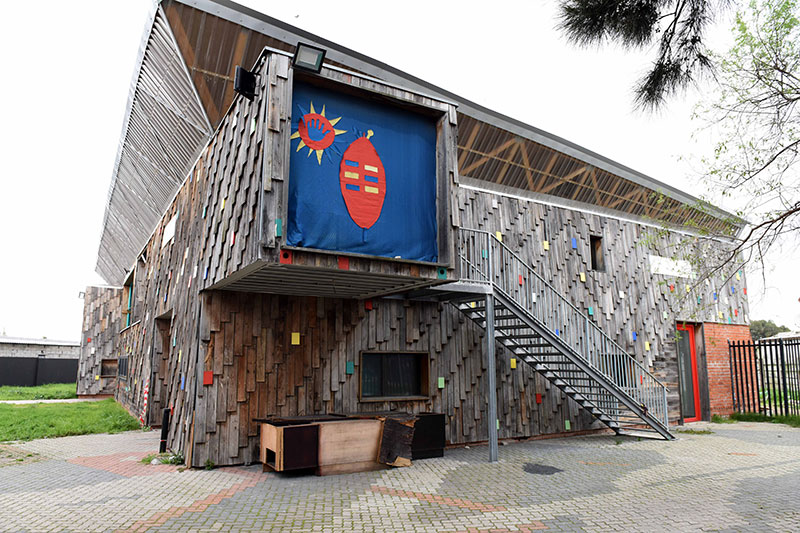
Student and community involvement
The theatre was originally part of a design-build programme which saw students from schools around the world – the Peter Behrens School of Arts (PBSA Düsseldorf), RWTH Aachen University (Aachen, Germany), the Georgia Institute of Technology (Atlanta, USA), and UCT – design and build a theatre and performance space as an extension to an existing arts and culture centre. The project was completed in 2016 in collaboration with UCT alumnus and architect Carin Smuts and the structural engineering company Imagine Structure GmbH (Frankfurt).
“Since its completion, the award-winning theatre had become an important place for the arts in Langa and an important site for ongoing architectural learning,” Abrahams said. In September 2020, part of the theatre was damaged by a fire that destroyed the main theatre space’s ceilings and sound studio. Despite the damage, the theatre was declared salvageable by the City of Cape Town’s insurer, and this set into motion the rebuilding project.”
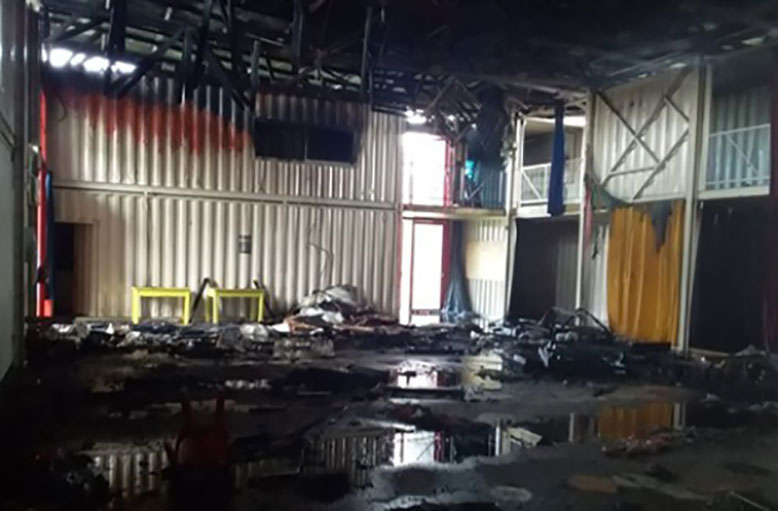
In 2021 Abrahams met with Smuts and Professor Judith Reitz and Thomas Schaplik of PBSA to discuss rebuilding the theatre. Abrahams then took on the task of redesigning and building new sound absorbers and light diffusers for the main theatre ceiling, and followed this up with sound absorbers for the theatre’s sound studio in 2022, with help from students in the second-year Architectural Studies programme.
“Germany’s Sto Foundation funded part of the rebuilding, as well as workshops and construction materials for the students and crafters,” Abrahams said. “The design and prototyping were conducted as part of my second-year technology course to integrate abstract design thinking with the making of buildings. We worked closely with local makers and youth on the production of the final building components and the implementation, with the aim of completing the on-site work between December 2021 and May 2022.”
An opportunity to stay connected
The impact of COVID-19 social distancing measures on academic projects created many challenges, such as working with large class sizes in limited spaces and remote teaching with limited peer learning. “This project offered the opportunity to work together and to remain connected with people,” Abrahams said. “Scheduling of work across multiple spaces in smaller groups with weekly online platforms to meet as a collective helped to sustain a studio culture.”
Students were asked to design with alternative materials and to investigate acoustics, lighting, and fireproofing of materials. In weekly online meetings, students presented their ideas to PBSA, UCT staff, and local experts.
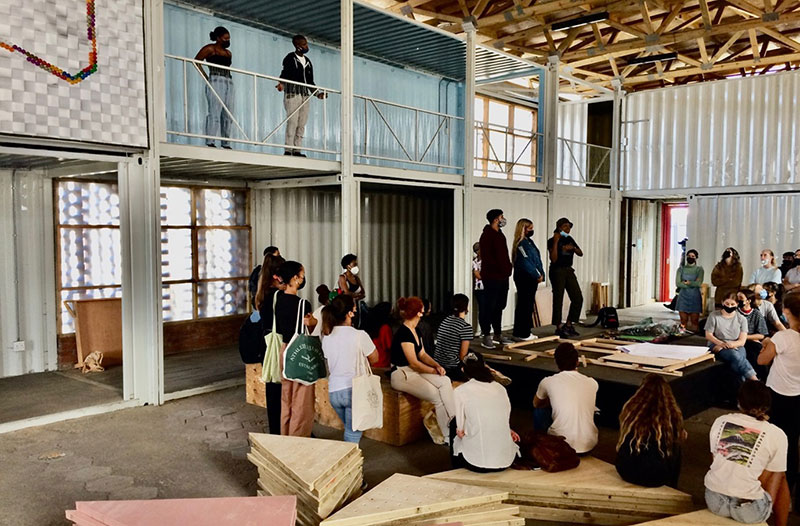
Sound absorbers and light diffusers
A design by students Kaylyn Carelse, Jason Ford, Tehsil Jogie, and Eryn Le Fleur was selected from 10 group projects. The group’s design for the ceiling comprised 144 unique triangles that were painted and upholstered in traditional shweshwe fabric and then arranged in a pattern to resemble an abstract township scene. The designs by David Dlamini, Anna Hauff, Shanay Meintjes, Karin Reeves, Sibongakonke Shezi, Tafadzwa Bere, Mlondi Khoza, Luyanda Mchunu and Moeletsi Sekhabi were selected and combined into the design of a light diffuser. The group proposed a metal wire triangulated frame wrapped in fabric to soften the sharp LED theatre lighting.
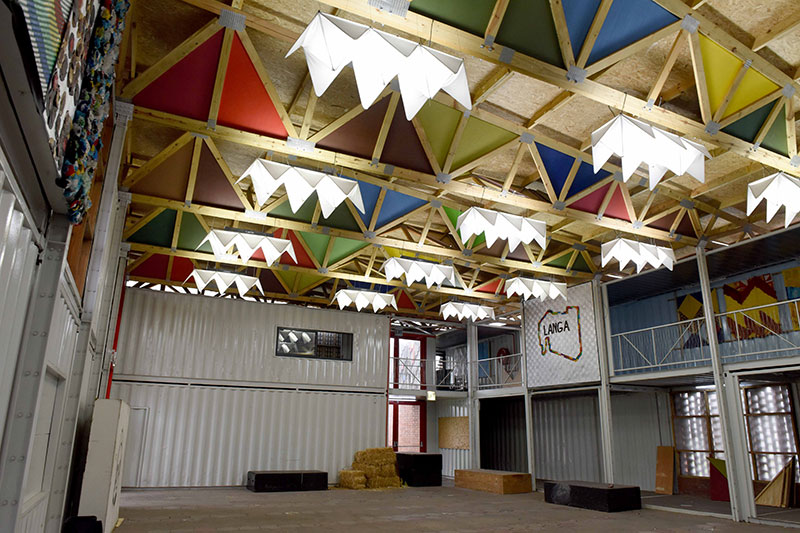
Acoustic murals
“For the shipping-container studio’s sound absorbers, a more inclusive approach was taken, with students tasked to design acoustics murals that could be used to clad the container interior wall,” Abrahams said. “The students explored cheap and recycled materials to self-fund and make their designs. The work compromises 16 acoustic murals created by the entire class.”
Abrahams then conceived a simple slatted timber wall lining to frame the students’ work. Parts of the old container were left visible through the slatted timber wall lining to reference the 2020 fire incident. “The completed studio interior is like a partially healed skin held together with colourful plasters, symbolising the many hands involved in rebuilding the theatre. Each acoustic mural can be seen as a register of time and culture in Langa.”
All the work was treated with a fire-resistant spray-on application that was investigated and tested by the students during their research.
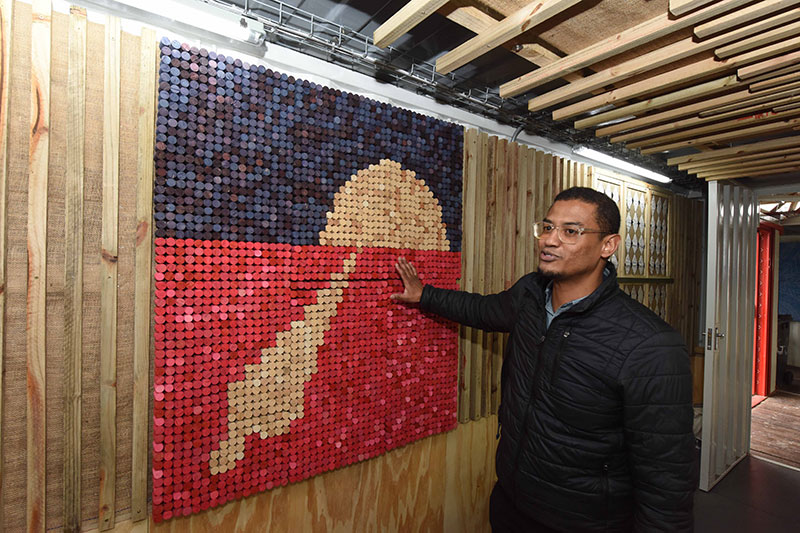
Working with local communities
During a workshop, local crafters from Langa made two art panels using recycled materials. The artwork became important reference pieces for students to learn how to reuse materials creatively. A local welder made welded metal frames for the light diffusers and handed these over to the crafters to cover in fabric. The sound absorbers for the central theatre ceiling were made by youth from Macassar and were then painted and upholstered by UCT students.
Impact of the rebuild
“The completion of the ceiling and the sound studio is an astronomical feat considering the impact of the COVID-19 pandemic on studio culture,” Abrahams said. “Several students expressed their pride in the project and commented that it was challenging but exciting, and boosted their morale by keeping them motivated.”
With the rebuilding completed in August, many anticipate that the Guga S’thebe Children’s Theatre will bring new life and energy back to the cultural precinct in Langa, where locals and visitors can come together and continue to share experiences of the arts.
 This work is licensed under a Creative Commons Attribution-NoDerivatives 4.0 International License.
This work is licensed under a Creative Commons Attribution-NoDerivatives 4.0 International License.
Please view the republishing articles page for more information.
KwaLanga Centenary 2023
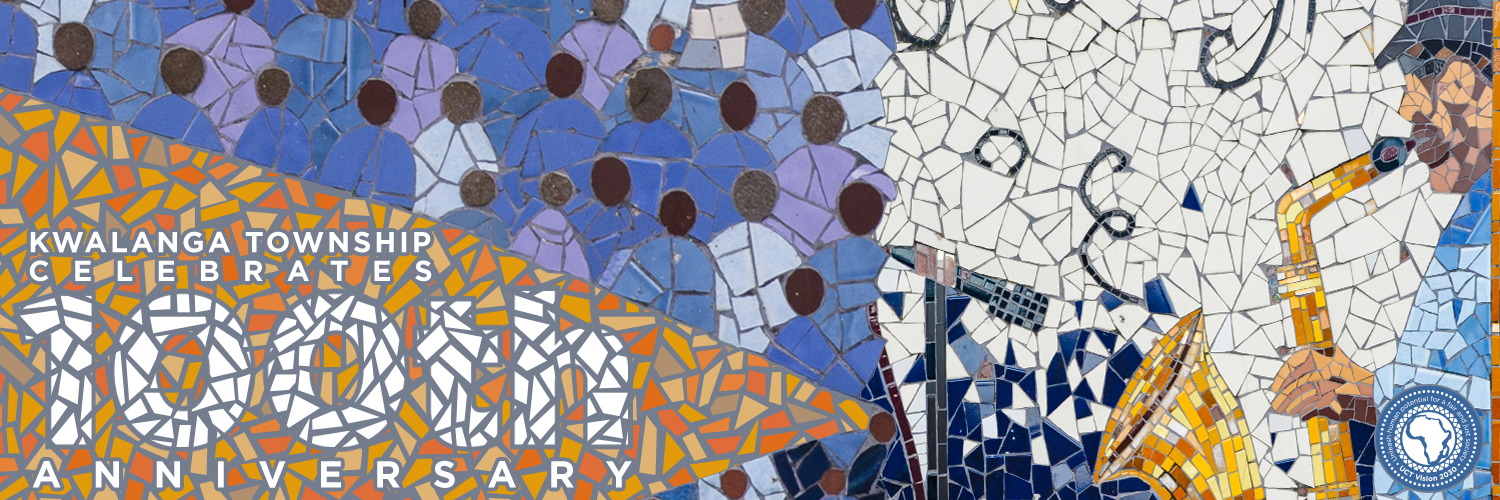
The Western Cape’s oldest township, KwaLanga, is marking its centenary in April 2023, presenting an opportunity to reflect on the township’s rich history and heritage. The University of Cape Town (UCT) has a history of engaging with KwaLanga residents, conducting research work, and collaborating on community initiatives.
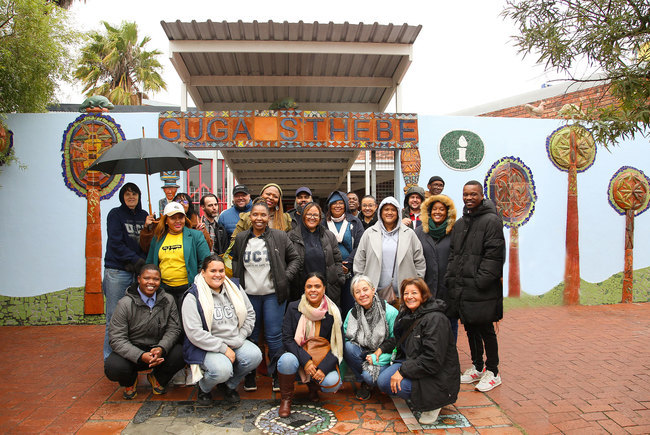
UCT’s CMD recently visited KwaLanga in commemoration of its 100th year of existence.
08 Jun 2023 - 4 min read Opinion
“The local people need to know that this is a place that houses their history,
and they should use opportunities to come and reflect on where we’ve come from.”
– Thami Sijila, Langa Heritage Museum curator and tour guide










